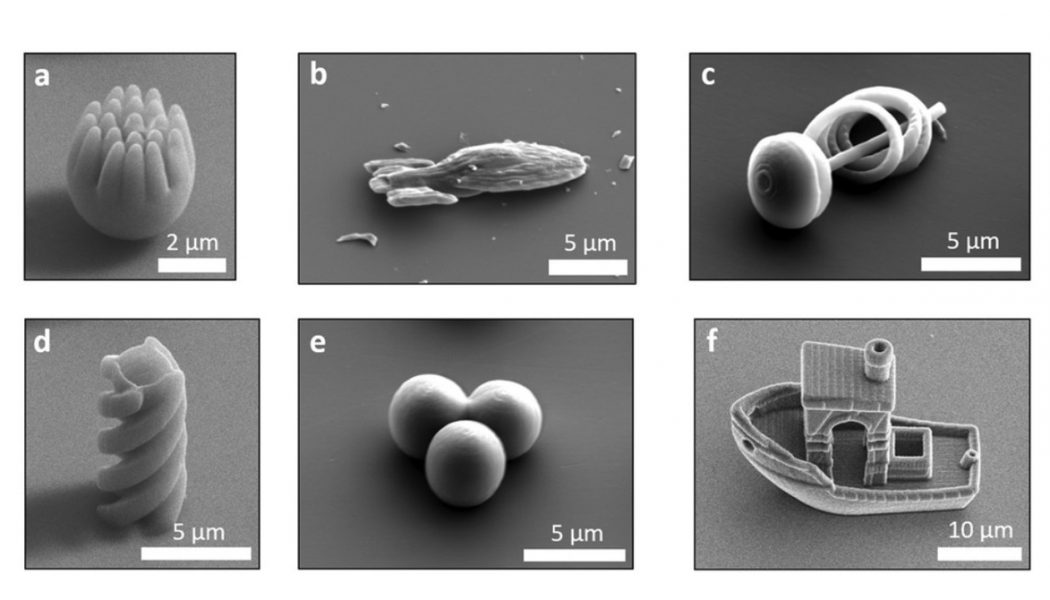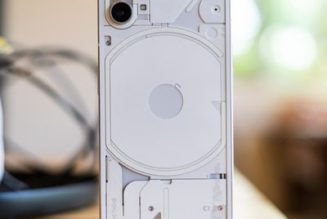Physicists from Leiden University have 3D-printed a miniature version of an Intrepid-class starship from Star Trek (via PC Gamer). The idea of a tiny starship is probably something you haven’t considered outside of the plot of a Star Trek episode, but this microscopic model is actually part of a larger research experiment the physicists published in the scientific journal Soft Matter.
The five micrometer long ship looks like the USS Voyager and was microprinted by the physicists for their microswimmer research. Unlike the impulse engines and warp drive of its TV counterpart, this Voyager is propelled through liquid by chemical reactions between its platinum coating and the hydrogen peroxide solution the physicists placed it in. Their article notes that these studies usually use sphere-shaped models for tests, so the more out-there shapes you see here were intended to produce different results and push the limits of the researchers’ 3D-printer in the process.
:no_upscale()/cdn.vox-cdn.com/uploads/chorus_asset/file/22010528/Screen_Shot_2020_11_03_at_12.18.27_PM.png)
Microswimmers are a broad scientific category used to sort organisms and objects that move through liquids. Bacteria or your white blood cells could be considered microswimmers, but so can synthetic objects created for study, like the minuscule Voyager or a model of 3DBenchy (a tugboat often used to test 3D-printers) that the Leiden physicists also included in their tests.
Studying the movement of synthetic microswimmers is supposed to provide insights into their natural counterparts, but futurists have also imagined possible futures where synthetic microswimmers could be part of targeted delivery systems for drug treatments and other therapies. For now, this journal article comes to more modest conclusions: 3D-microprinted models could be potentially useful for further experiments and the unusual shapes used might offer the ability to get more “designed” types of movement out of microswimmers than traditional spheres and cylinders do.
Most importantly to me, it’s really cool to imagine tiny spaceships and boats traveling through your body like something out of Innerspace or Osmosis Jones. The scientists might not be able to explicitly say that in their study, but I’m sure they were thinking it too.










